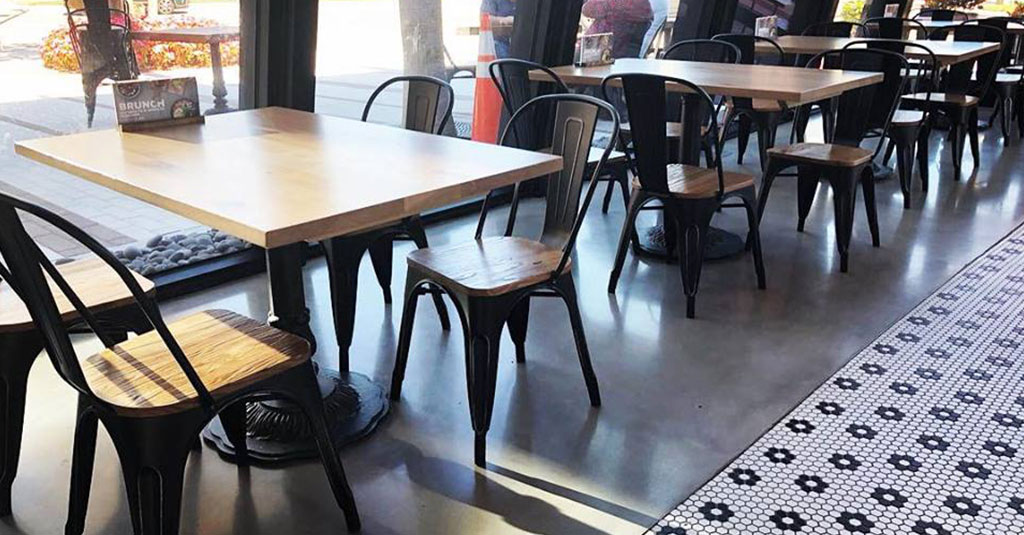
Concrete Polishing vs. Concrete Resurfacing: What’s the Difference?
Concrete floors were once primarily found in commercial and industrial environments, but they’re becoming more popular in all kinds of buildings, from garages and basements to studios, apartments, condominiums and more. Concrete floors are easy to maintain and durable, and they’ll stay glossy and new-looking for many years. Occasionally, however, your concrete floor might need a bit of a refresh, which means that you’ll need to decide on whether you want to polish or completely resurface it with a decorative overlay. Both can be good choices in certain situations, but each process offers different benefits for specific situations.
Factors Affecting Polishing and Resurfacing
The Condition of the Floor
Most concrete floors are good candidates for polishing. However, structural damage or serious flaws, such as spalling, patchwork or tack holes, can still show through after concrete floor polishing, making floors with such damage better candidates for concrete floors resurfacing rather than polishing. Decorative resurfacing or overlays can range from self-leveling overlays for covering and concealing damaged spots to thin micro-toppings and decorative treatments.
The Desired Appearance
Both overlays and polished concrete flooring can be attractive options. Polished concrete has a beautiful high-gloss surface that goes well with most decorating schemes. However, decorative overlays offer more versatility when it comes to style, including:
- Stains and dyes
- Decorative saw cuts
- Stencils
- Numerous finish options ranging from smooth to highly textured
- Stamped surfaces to resemble brick, stone or slate
- Decorative aggregates for a terrazzo effect
Polishable overlays are another option that can provide you with the look of polished concrete while still covering existing flaws.
Performance Needs
Polished concrete floors are resilient and durable thanks to the nature of the polishing process. This makes them especially useful in high-traffic areas where they offer long-lasting service compared to cement-based overlays. Polished concrete flooring is also easier to maintain than decorative overlays and other types of concrete flooring because there’s no need for sealants, waxing or other coatings. The polishing process creates a smooth, polished surface that will retain a high-gloss luster for years.
Decorative overlays need to be sealed or coated with wax or another type of protective coating especially in areas with high foot traffic or risk of abrasions.
Making Your Decision
Concrete floor polishing is ideal for structurally sound floors, has a high-gloss sheen, can be colored or dyed, can include decorative saw cut or stenciled patterns and is easy to clean and maintain. Concrete floors resurfacing offers much the same benefits but is a better option for floors with major flaws. It can also be used with textured finishes, but a drawback is that it may need periodic waxing and sealing. Polishable resurfacing or overlays offer the best of both worlds and can be used on damaged floors while still offering the convenience and ease of maintenance of conventional polished concrete.
About Blackrock Industrial Concrete Floors Services
Blackrock Industrial is proud to be Miami’s leading contractor and installer of polished concrete flooring. We specialize in epoxy flooring, concrete resurfacing, self-leveling, sealing and terrazzo floors. Our team provides durable, seamless flooring solutions for commercial, industrial, healthcare and residential markets throughout the South Florida and Central Florida Regions. If you’d like to learn more about our high-performance concrete floors services, contact our team today to schedule an appointment with one of our installation specialists or to get an estimate.


